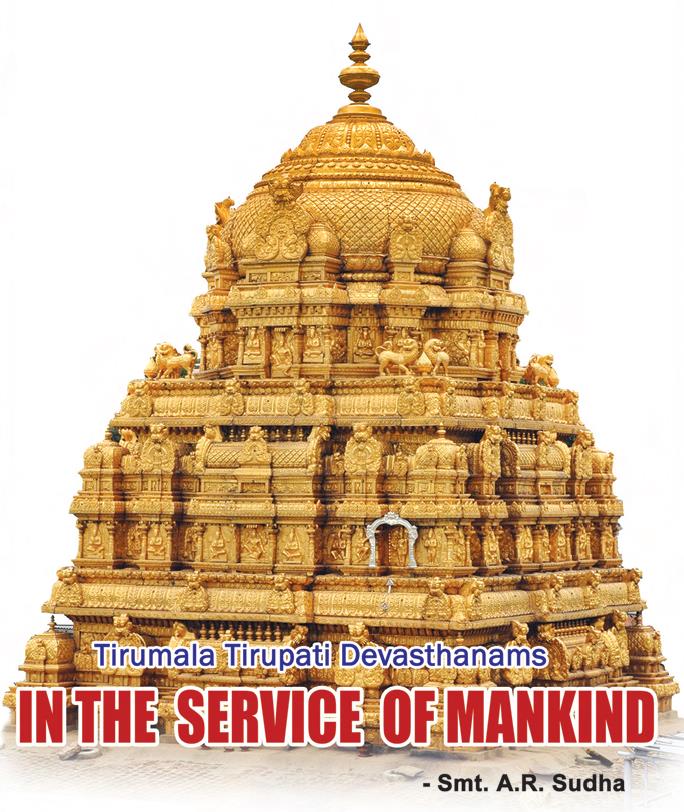Article posted on Saptagiri Magazine by – Dr. Venkata Harshavardhan R.D. Sri Padmavathi Ammavari Kartika Brahmotsavams is a spectacular festival of Tiruchanur and Tirupati. Just as Tirumala Brahmotsavam ends with CHAKRA SNANAM, even Tiruchanur Kartika Brahmotsavam ends with a Chakrasnanam on the auspicious Panchami Teertha day known as ‘Panchami Theertham’. Saare – From Tirumala to Read More
Category: Tirupati
Tirupati is a city in Chittoor district of the Indian state of AP. It is a municipal corporation and the headquarters of Tirupati mandal, and of the Tirupati revenue division.
Spiritual Capital of AP
Tirupati is considered one of the holiest Hindu pilgrimage sites because of Tirumala Venkateswara Temple, besides other historical temples, and is referred to as the “Spiritual Capital of Andhra Pradesh”.
Population
As of 2011 census, it had a population of 374,260, making it the ninth most populous city in Andhra Pradesh.
TTD – Sri Venkateswara Ayurvedic Hospital, Tirupati
Sri Venkateswara Ayurvedic Hospital / SV Ayurveda Hospital Dhanvantari Dhanvantari, an incarnation of Lord Vishnu, the immanent divine consciousness, represents the divine healer in the tradition of Ayurveda. Lord Dhanvantari considered the God of Ayurvedic medicine is believed to have emerged from the sea during Samudra mathan, holding a pot of Amrit in one hand Read More
Peculiar Terminology – Tirupati Balaji Temple
Article by – Sri T.K. Krishnaswami Thathacharya Peculiar Terminology Our ancient Hindus tried to focus the infinite powers and attributes of the invisible divinity in a visible image for ministering to our spiritual welfare. The Mahabharata (Mausala Parvam Chapter – V) states the origin of image worship. It is unknown when the Lord came to Read More
3 Modes of Prayer
3 Modes of Prayer Man, not only yearns for his well-being but also for the welfare of mankind. It is best channeled through a prayer. A prayer should be uttered with concentration. Prayer / Worship prescribes three steps : Salutation to the lotus feet of Lord Narayana Utterance of the pure name of Narayana and Read More
3 Modes of Worship
3 Modes of Worship Man, not only yearns for his well-being but also for the welfare of mankind. It is best channeled through a prayer. A prayer should be uttered with concentration. Prayer / Worship prescribes three steps : Salutation to the lotus feet of Lord Narayana Utterance of the pure name of Narayana and Read More
Tirumala Tirupati Devasthanams (TTD) – Schemes and Trusts
Tirumala Tirupati Devasthanams (TTD) – Schemes and Trusts Philanthropy is one of the major sources of revenue that drives the Tirumala Tirupati Devasthanams (TTD) in its endeavor to benefit society. More than the money involved, it is the offerings made by the devotees, right from a normal person to a multi-millionaire, in fulfillment of their Read More
Sakshatkara Vaibhavotsavam – Srinivasa Mangapuram
Sakshatkara Vaibhavotsava Utsavam at Srinivasa Mangapuram Temple The T.T.D. performs Various utsavas every year on different occasions to Sri Kalyana Venkateswara Swami in Srinivasamangapuram. One among them is the annual ‘Sakshatkara Vaibhavotsava utsavam’. This utsavam is conducted for three days in Ashadamasam. Legend There is an interesting Sthala Purana behind the celebrations of the Annual Read More
Sri Srinivasa Divyanugraha Homam
Sri Srinivasa Divyanugraha Homam Sri Srinivasa Divyanugraha Homam is the latest sacred offering from the Tirumala Tirupati Devasthanams for the devotees seeking the Lord’s divine blessings. The Homam was formally inaugurated in November 2023, marking the auspicious occasion of Utthana Ekadasi in the sacred Kartheeka month under the aegis of TTD Trust Board Chairman Sri Read More
Sri Lakshmi Jayanti in Tirupati 2022
Sri Lakshmi Jayanti in Tirupati – Sri GovindarajaSwami Temple Tremendous importance is attached to this ‘Sri Lakshmi Jayanti’ ritual which is performed in Sri Govindarajaswami temple, Tirupati. Temples are representatives of our culture and traditions. Festivals are an important part of our culture. They are some special occasions, bringing people together to commemorate rituals. One Read More
SriVari Seva – Tirumala Tirupati Devasthanams (TTD)
SriVari Seva Services Intending to offer better services to the pilgrims who come from far-flung parts of the country and across the globe to Tirumala for darshan of Sri Venkateswara Swamy, Tirumala Tirupati Devasthanams(TTD) has launched “Srivari Seva” voluntary service in the year 2000. The services of Srivari Sevakulu are being utilized in over five Read More







